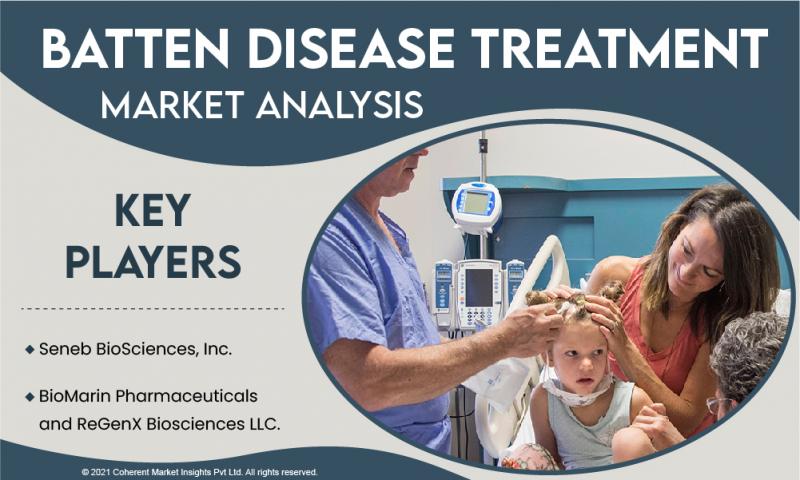Batten disease, also known as neuronal ceroid lipofuscinosis (NCL), is a rare and devastating genetic disorder that primarily affects children. It is a group of inherited neurodegenerative disorders characterized by the buildup of lipopigments in the brain and other tissues. Over the years, researchers and pharmaceutical companies have been tirelessly working to find effective treatments for Batten disease. In this blog, we will explore the current landscape of the Batten disease treatment market and the promising developments that offer hope to patients and their families.
The Unmet Need:
Batten disease is a relentless condition that leads to severe neurological impairment, including loss of vision, motor skills, and cognitive function. Historically, there were no specific treatments available, leaving families with little hope and a heartbreaking prognosis. However, recent advancements in medical research and technology have shed light on potential therapeutic options.
Emerging Therapies:
- Enzyme Replacement Therapy (ERT): Enzyme replacement therapy is a promising avenue for certain types of Batten disease. It involves replacing the missing or malfunctioning enzyme responsible for breaking down lipopigments. While ERT has shown positive results in some clinical trials, further research is needed to refine this approach.
- Gene Therapy: Gene therapy has gained significant attention in recent years as a potential game-changer for Batten disease. It aims to introduce functional genes into the patient's cells to correct the underlying genetic defect. Several gene therapy trials are ongoing, offering hope for a long-term solution.
- Small Molecule Therapies: Researchers are exploring small molecules that can target the underlying mechanisms of Batten disease. These compounds may help reduce the accumulation of lipopigments in cells and slow down disease progression. Clinical trials are underway to assess their safety and efficacy.
- Stem Cell Therapy: Stem cell therapy holds promise for Batten disease by replacing damaged or degenerated cells with healthy ones. While this approach is in its early stages, it offers hope for halting disease progression and improving quality of life.
Collaborative Efforts:
The Batten disease community has witnessed collaboration between academia, pharmaceutical companies, and patient advocacy groups. These partnerships have accelerated research and the development of potential therapies. Additionally, increased awareness and funding have propelled the field forward, providing new hope for affected individuals.
Challenges Ahead:
While significant progress has been made in the Batten disease treatment market, challenges remain. These include the need for more robust clinical trials, the development of personalized treatments tailored to specific genetic mutations, and addressing the high costs associated with emerging therapies.
Conclusion:
The Batten disease treatment market is witnessing remarkable advancements, offering a ray of hope to patients and their families. With ongoing research, increased collaboration, and a deeper understanding of the disease, we are moving closer to effective treatments and, ultimately, a cure for Batten disease. While challenges persist, the dedication of researchers and the resilience of affected individuals inspire optimism for a brighter future in the fight against this devastating disorder.
Read More….
Wilson's Disease Treatment Market
Anesthesia and Respiratory Devices Market
